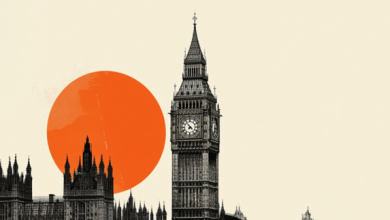The affordability crisis is forcing Trump to radically reshape his economic plan on the fly

President Donald Trump swept into office with a bold plan to remake America’s economy. But the realities of a persistent affordability crisis, low favorability ratings and biting election losses for his Republican party are forcing him to remake his plan on the fly.
Although still in the early stages, Trump’s Plan B appears to be a spaghetti-on-the-wall strategy that includes $2,000 tariff rebate checks, 50-year and portable mortgages and lower tariffs on common grocery items.
Each tactic comes with significant question marks – and some are so radical economists fear they could squeeze Americans’ finances even more.
The original Trump economic plan was based on three bold assumptions:
-
America could bring in hundreds of billions of dollars – perhaps even trillions – through tariffs that would fill the country’s coffers without causing inflation to rise.
-
Massive government spending and regulation cuts could potentially save $1 trillion or more each year. It would incentive businesses to grow and invest in the United States, creating a hiring boom. It could also lower bond yields, which would reduce borrowing costs for mortgages, car loans and credit cards.
-
The spending cuts and tariff revenue would pay for a gigantic tax cut that would lower the cost of living for Americans.
For the plan to come to fruition, all three parts had to work perfectly. That’s because each part relied on the other. If one leg of the stool was loose, the whole thing would topple over.
As it turns out, some parts didn’t work.
Boosted by deregulation of AI companies and tax cuts, the stock market has roared higher. But consumer prices haven’t fallen – they’ve continued to rise. Inflation remains relatively low, but it is picking up, in part because of tariffs.
High-profile corporate promises to invest in US manufacturing could take years to bear fruit. Meanwhile, the tax cuts and deregulation have failed to persuade American businesses to make the level of investment that the Trump administration had hoped for. Overall hiring in the United States has come to a standstill in recent months.
Bond yields have fallen but not enough to make a major difference. Mortgage rates remain above 6%, and the number of subprime borrowers defaulting on their auto loans has doubled over the past four years, according to Fitch Ratings.
It may be early to judge Trump’s economic plan less than a year into his second term, but Americans are increasingly fed up. A recent CNN poll conducted by SSRS showed that 72% of Americans say the economy is in poor shape, and 61% say Trump’s policies are making the economy worse. A Democratic sweep of this month’s elections showed a significant leftward shift in former Trump voters and proved affordability was front and center in voters’ minds when they went the polls.
Now, a new plan is emerging.
Tariff dividends: Trump last weekend floated the idea of $2,000 tariff rebate checks, a proposal he’s mused about before but which seemed to initially catch his advisers off guard this time. White House Press Secretary Karoline Leavitt, however, doubled and tripled down on the proposal this week, saying a plan was actively being considered.
Using tariff revenue to issue a kind of stimulus check would need congressional approval, and that may be a tough sell when inflation is on the rise again. Economists warn that sending households thousands of dollars could trigger a rush of demand for goods without adding supply to the market. That imbalance could raise prices even more, exacerbating inflation.
50-year mortgages: Trump this week acknowledged that his administration is considering a 50-year mortgage, which could lower homebuyers’ monthly premiums by drastically extending the length of their home loans. Federal Housing Finance Agency Director Bill Pulte called the proposal “a complete game changer.”
But critics argue that a 50-year mortgage will ensure many borrowers never actually own their homes. Money that some borrowers could have saved for retirement would end up paid to banks in the form of higher interest payments. The length of the loan also means the total interest ultimately paid on a loan would jump.
All of that could harm Americans’ long-term financial security.
Portable mortgages: Pulte this week said the Trump administration was considering a portable mortgage, which would allow borrowers to maintain their existing, lower-rate home loans when they purchase a new home. That could potentially thaw the frozen US housing market by giving homeowners the assurance that they could keep their relatively low mortgage payments when they move – even as current mortgage rates remain high.
But industry experts worry that the logistics of a portable mortgage plan could be difficult to overcome. The plan would require borrowers to cover the cost difference between the new home and the old one, which could mean a second mortgage. And it could throw a wrench in the gears of the investment market that keeps the mortgage market flowing, unintentionally raising mortgage rates along the way.
Lowering some tariffs: Treasury Secretary Scott Bessent this week said that the administration will announce lower tariffs on produce that isn’t grown in the United States, including bananas and coffee. “That will bring the prices down very quickly,” Bessent said.
That could reduce import prices, but it probably won’t have a dramatic effect on consumer prices. So far, businesses have chosen to pay roughly 80% of the tariffs’ cost, according to a recent JPMorgan analysis. And the produce Bessent mentioned may be particularly bad examples: Coffee prices were surging because of climate change, long before tariffs kicked in, and Americans’ fixation on coffee ensures that companies can keep their prices high. Bananas are particularly low-priced fruit that won’t dramatically relieve grocery price pressures.
A significant amount of political capital remains at stake: Trump won reelection on the economy, criticizing former President Joe Biden for failing to address the rising cost of living after the post-pandemic inflation crisis. Trump’s promise to cut prices on Day One was always unrealistic, but his signature economic policy, tariffs, has proven unpopular, as Americans associate the tariffs with higher costs.
Instead, the administration’s policies may be exacerbating the so-called K-shaped economy, in which wealthier Americans benefit from their growing investments in the stock market while lower-income Americans increasingly live paycheck to paycheck.
Trump’s immediate reaction to the GOP’s election losses and new polls was denialism: He claimed, falsely, that prices have, in fact fallen during his administration.
But the administration is beginning to shift its focus and acknowledge Americans want the White House to do more to address their high cost of living. Administration officials told CNN’s Alayna Treene that Trump is getting more frequent economic briefings and has been encouraged to spend more time on domestic travel and policies.
And Bessent this week coined a new Trump-approved phrase: “Make America Affordable Again.” The devil, as always, will be in the details.





